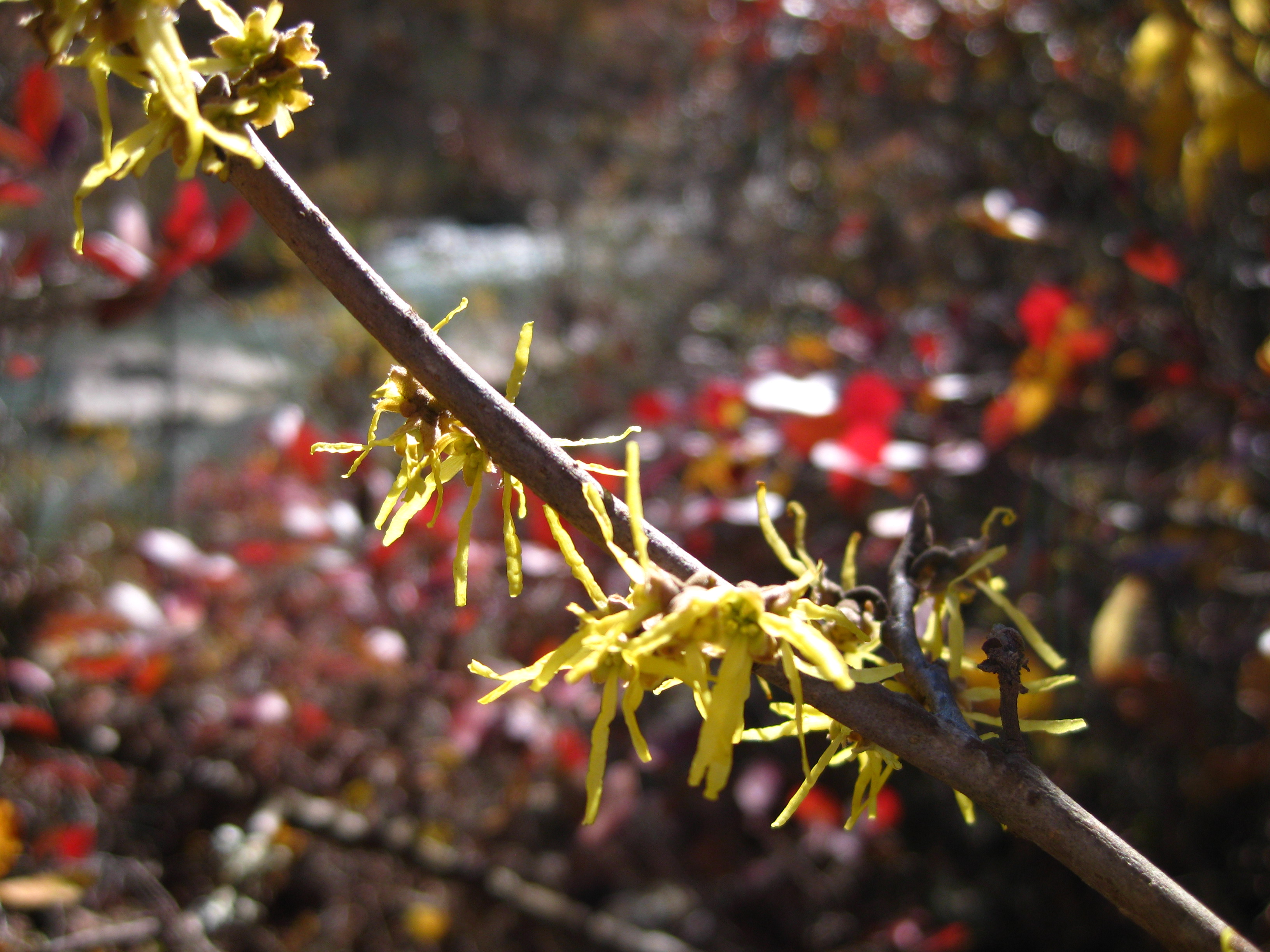Witchhazels
Contact
University of Arkansas System Division of Agriculture
Cooperative Extension Service
2301 S. University Ave.
Little Rock, AR 72204

Witchhazels
Yesterday while driving off the ridgetops into the headwaters of the White River, I spotted the soft yellow blossoms of a common witchhazel in full bloom. Arkansas has two witchhazels, Hamamelis virginiana, the fall blooming common witchhazel and H. vernalis, the spring blooming Ozark witchhazel. As interesting and beautiful as these large shrubs or small trees are, I’m always surprised how infrequently they are seen in gardens.
Differentiating between the two witchhazels is easy. Not only do they bloom at different seasons, but they grow in different sites. The common witchhazel, which has a native range from East Texas to Canada, is mostly found in higher ground away from rivers and streams whereas the Ozark witchhazel usually is found next to seasonal streams or sometimes in adjacent floodways. This species has a limited range and is found only in the Ozarks and adjacent areas in the Ouachita Mountains.
Additionally, Ozark witchhazels tend to be somewhat smaller and more bush-like, seldom reaching more than 15 feet in height with multiple branches sent up from the base. The common witchhazels grow up to 20 feet tall and are more likely to have one trunk, though they too sucker freely from the base of the plant.
Both witchhazels have a wide range of flower colors from soft yellow through red-brown but from the plants I’ve observed the common witchhazels in Arkansas tend more towards the yellow end of the spectrum while the Ozark witchhazels are usually darker in color and shaded towards red-brown. I think the Ozark witchhazel is more sweetly fragrant than its fall-blooming kin, but the difference is minimal. Both species can have a nice yellow fall color but Ozark witchhazels tend to hold on to their leaves over winter, partially obscuring the strap shaped blooms in the spring.
Witchhazels have had a long history of folk use in rural parts of America. An extract of witchhazel bark, twigs and even roots was used by Native Americans in topical medicines, primarily as a mild astringent. Extracts are still offered in places selling herbal remedies. The tissue is steamed under pressure and the hydrosol extract collected. The water soluble witchhazel extract is primarily used for topical application for swelling caused by bruising, insect bites, pimples and poison ivy rash. It is also used in most hemorrhoid medicines.
The second folk use of witchhazel means we need to examine the common name more closely. The name witchhazel is a derivation from old English “wiche” or the even older “wicken” which derives from Anglo-Saxon times. All refer to a limb that is pliant or bendable and comes into current usage as the word “switch.” Early English settlers found that the branches of the common witchhazel could be used to dowse or divine for underground water much as the hazel bush (Corylus) was used back in England.
Divining, witching or dowsing for water has enjoyed a long history around the world. The scientific community pretty much dismisses the exercise as superstitious hogwash, but the practice still persists. The twitching and dipping seen in these rods is attributed to the object being held in a state of unstable stress. Say the scientists, any slight muscle tremor, breeze or movement from walking can cause the rod to flex. Or, could there still be things in the world the experts haven’t quite figured out? I, for one, certainly hope so.
Peach branches, cherry stems, willows and even brass rods are more often employed today, but dowsing is still widely practiced. My son drilled a water well a few years back. The “put it here” approach was a dry hole while the dowsed well just a short distance from the first, produced a strong flow. I will keep an open mind and, some cold and rainy day, set down and watch all those YouTube videos and get the real answer to this perplexing question.
